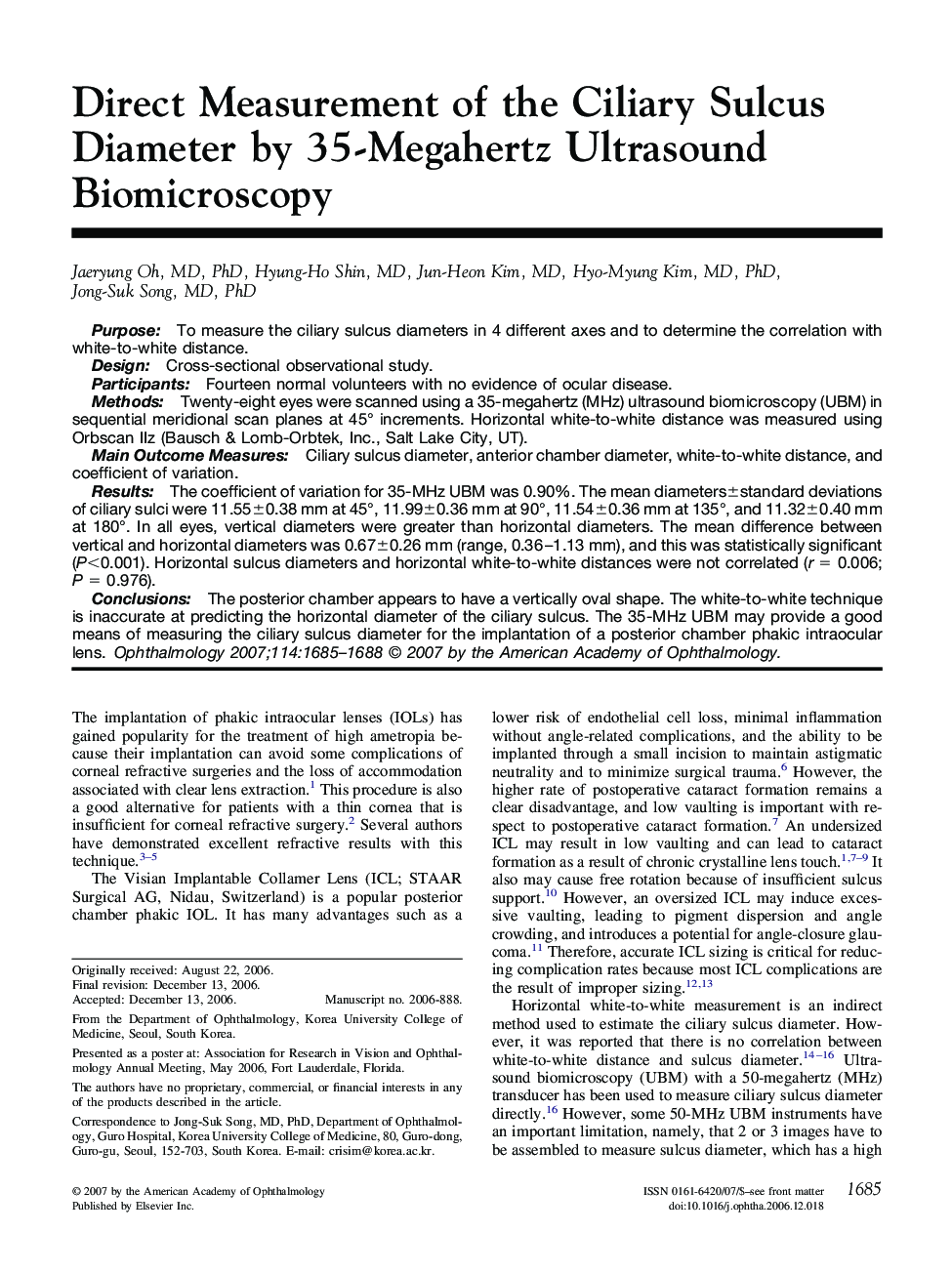| Article ID | Journal | Published Year | Pages | File Type |
|---|---|---|---|---|
| 4029203 | Ophthalmology | 2007 | 4 Pages |
PurposeTo measure the ciliary sulcus diameters in 4 different axes and to determine the correlation with white-to-white distance.DesignCross-sectional observational study.ParticipantsFourteen normal volunteers with no evidence of ocular disease.MethodsTwenty-eight eyes were scanned using a 35-megahertz (MHz) ultrasound biomicroscopy (UBM) in sequential meridional scan planes at 45° increments. Horizontal white-to-white distance was measured using Orbscan IIz (Bausch & Lomb-Orbtek, Inc., Salt Lake City, UT).Main Outcome MeasuresCiliary sulcus diameter, anterior chamber diameter, white-to-white distance, and coefficient of variation.ResultsThe coefficient of variation for 35-MHz UBM was 0.90%. The mean diameters±standard deviations of ciliary sulci were 11.55±0.38 mm at 45°, 11.99±0.36 mm at 90°, 11.54±0.36 mm at 135°, and 11.32±0.40 mm at 180°. In all eyes, vertical diameters were greater than horizontal diameters. The mean difference between vertical and horizontal diameters was 0.67±0.26 mm (range, 0.36–1.13 mm), and this was statistically significant (P<0.001). Horizontal sulcus diameters and horizontal white-to-white distances were not correlated (r = 0.006; P = 0.976).ConclusionsThe posterior chamber appears to have a vertically oval shape. The white-to-white technique is inaccurate at predicting the horizontal diameter of the ciliary sulcus. The 35-MHz UBM may provide a good means of measuring the ciliary sulcus diameter for the implantation of a posterior chamber phakic intraocular lens.
